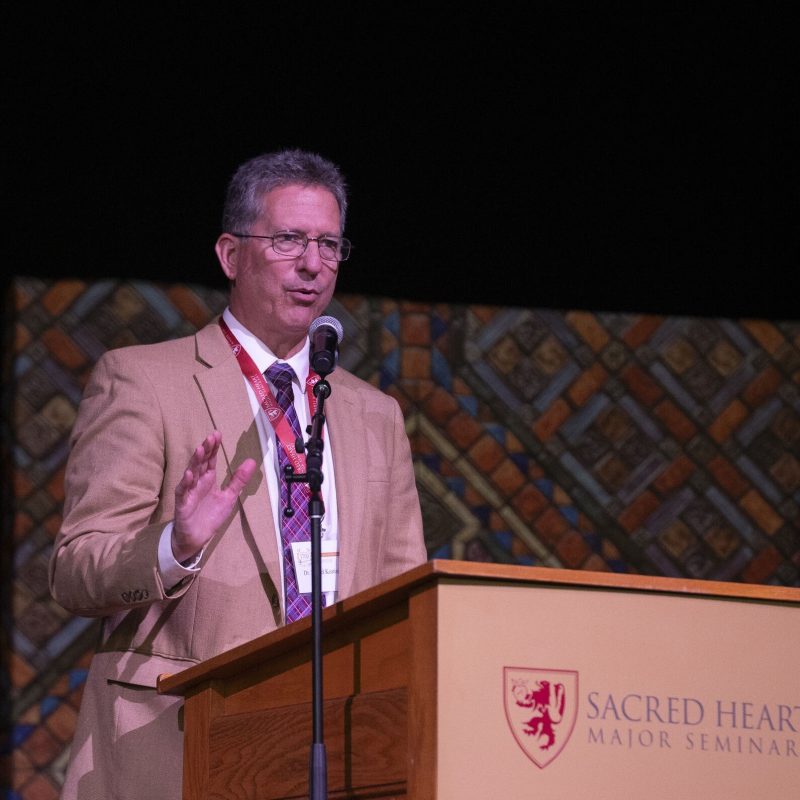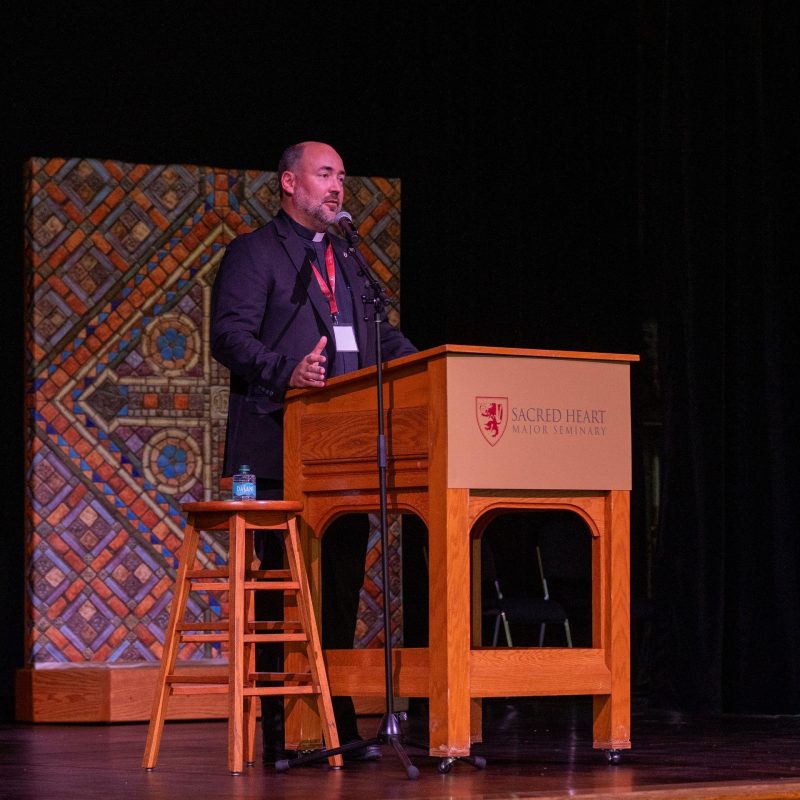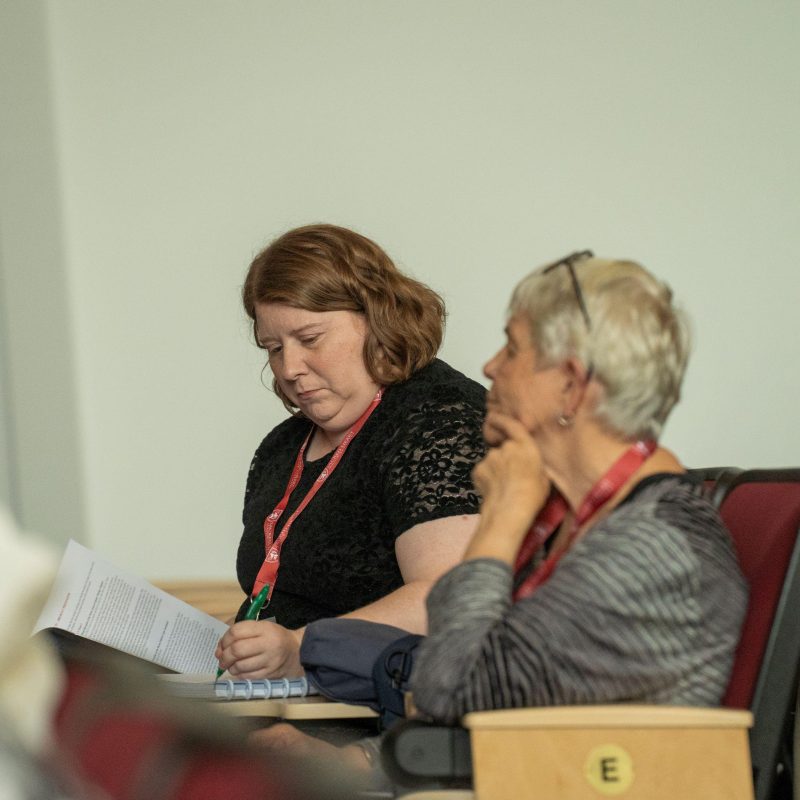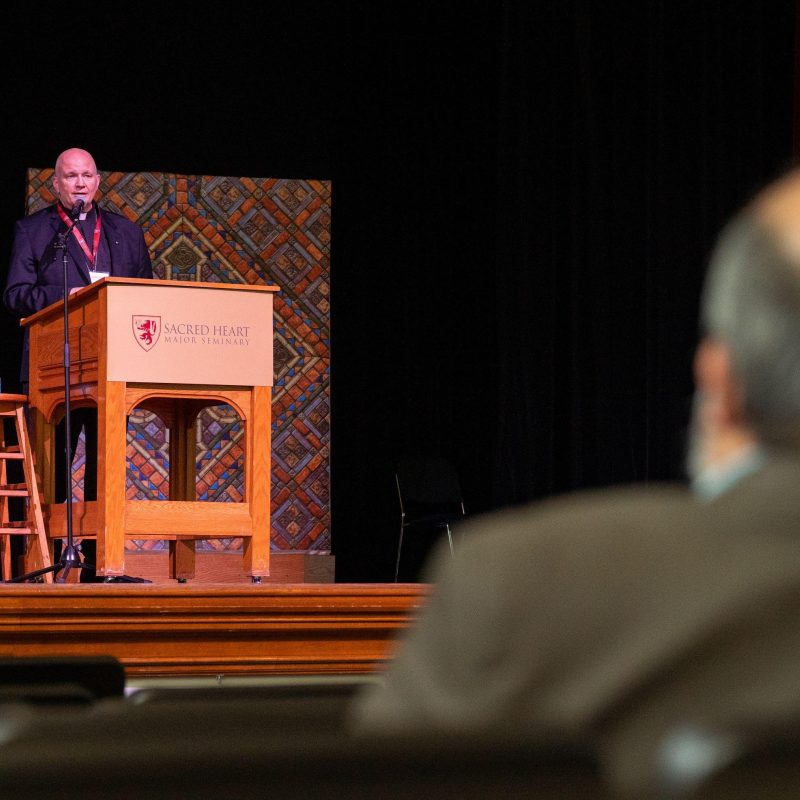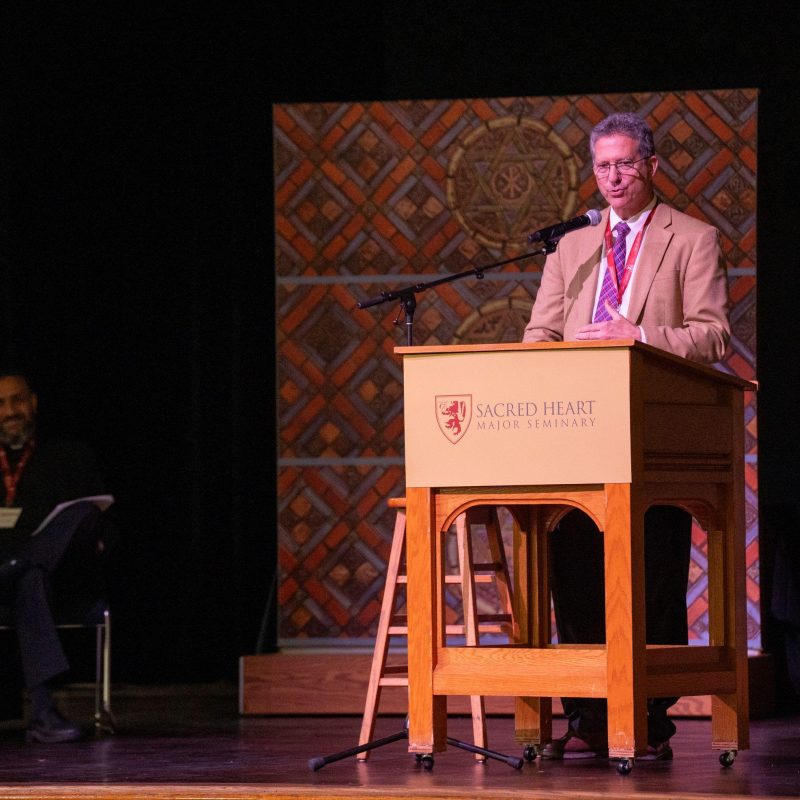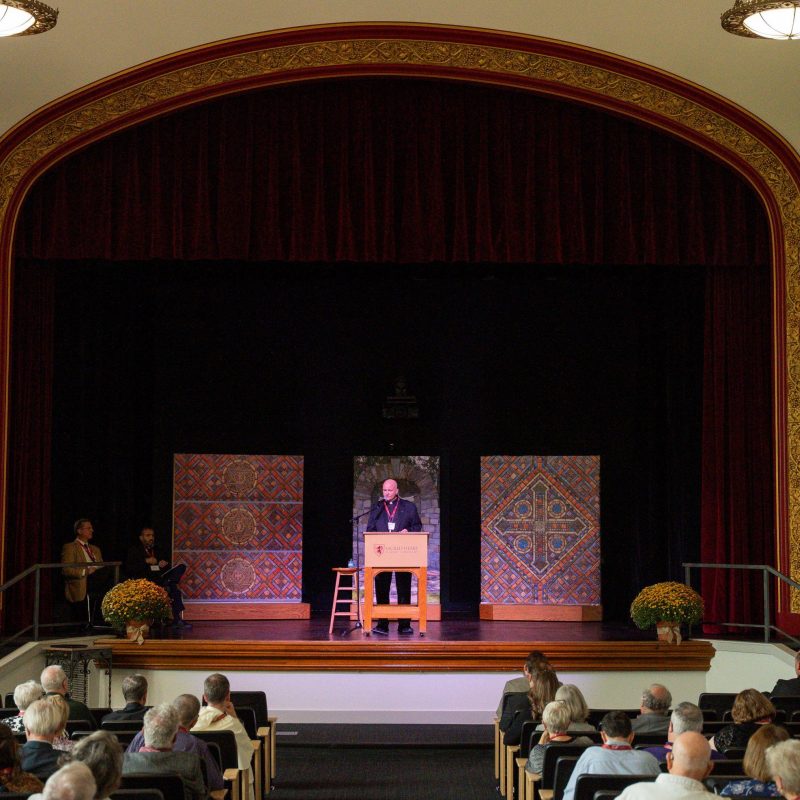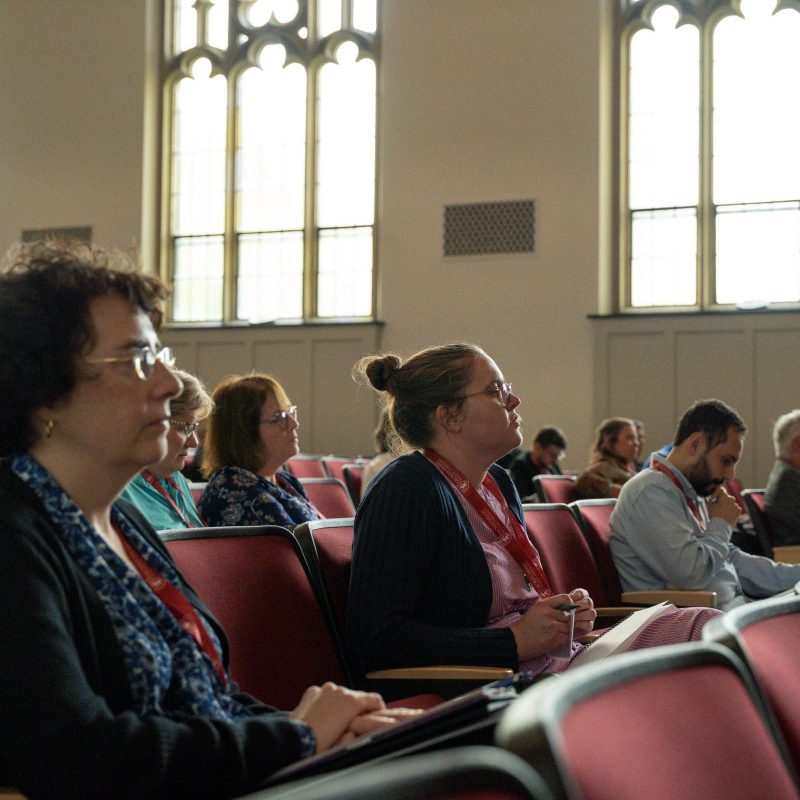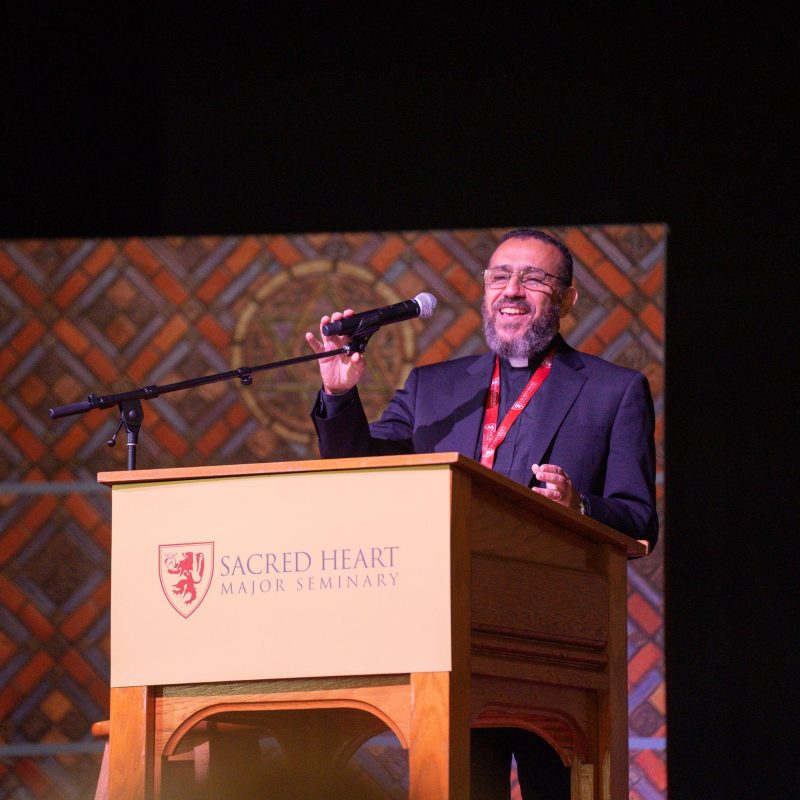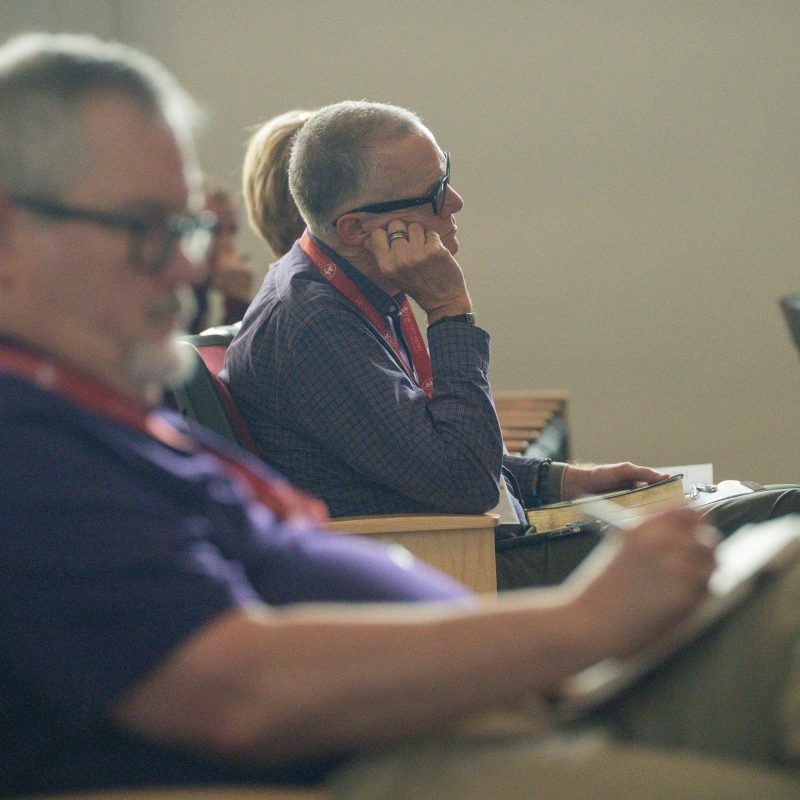DETROIT ─ One thousand seven hundred years after the Council of Nicaea, the church continues to study the historic gathering that laid the groundwork for its core beliefs.
As the church embarks on its third millennium of preaching the Gospel of Jesus Christ, scholars still draw from the Council of Nicaea, the church fathers who attended the council, the theological questions they grappled with and the foundational truths they discerned at the famed gathering that took place in modern-day Turkey in 325.
Sacred Heart Major Seminary in Detroit hosted scholars from across the globe Oct. 2-4 to unpack the same topics the church fathers in Nicaea discussed all those years ago at “Nicaea at 1700: The First Council and the ‘Way Together.’”
“It’s a conference that focuses especially on how the synodal way, which is what ‘council’ means, speaks to the realities of the church today,” Dr. Kevin Clarke, dean of the Institute for Lay Ministry and associate professor at Sacred Heart Major Seminary, told Mosaic. “What does Nicaea have to say about church life today? This is an important moment for the life of the local church.”
For three days, academics presented papers on various topics related to the Council of Nicaea, drawing lessons from the council even all these years later. Attendees and speakers came from across North America, as well as places like Rome, Cairo, Scotland and elsewhere.
Fr. Stephen Burr, rector-president of Sacred Heart Major Seminary, said the conference had been planned since November 2024 as a way to properly commemorate the 1,700th anniversary of the Council of Nicaea.
“This conference was inspired by Archbishop-emeritus (Allen H.) Vigneron, who had the idea that Sacred Heart could offer a conference for the anniversary of Nicaea, knowing the great work and scholarship that happens with our faculty here at the seminary.
“We solicited keynote addresses from premier speakers and writers who are scholars of the fathers of the church and councils of the church,” Fr. Burr added. “Then once people saw the keynote speakers that were already signed on, we received many proposals for papers.”
As a center for the new evangelization, it was important for Sacred Heart to host the conference and invite academics to re-examine the Council of Nicaea and how the wisdom of the early church fathers can steer the church going forward in re-proclaiming the Gospel to the world, Fr. Burr said.
“The faith hasn’t changed, but we need to adapt to communicate the truth of our faith to today’s culture,” Fr. Burr said. “The richness of the Council of Nicaea has defined and developed these truths that we celebrate at this conference and explore their meaning for our lives today.”
Speakers included Fr. Khaled Anatolios, the John A. O’Brien Professor of Theology and Chair of the Department of Theology at the University of Notre Dame; Fr. Andrew Hofer, OP, Ordinary Professor of Patristics and Ancient Languages at the Pontifical Faculty of the Immaculate Conception, Dominican House of Studies, in Washington, D.C.; and Dr. Lewis Ayres of the Pontifical University of St. Thomas Aquinas (Angelicum) in Rome.
The conference also included several breakout sessions and an introduction from Detroit Archbishop Edward J. Weisenburger.
Fr. Anatolios presented his paper, Athanasius’s Nicene Ecclesiology, offering a sketch of the Christological foundations of the famed church father’s conception of the church.
“The first church is the Body of Christ,” Fr. Anatolios said. “The integrity of Christ’s physical body is in direct context of Christ’s body as the church. We should attend to the obvious Eucharistic content of Christ’s body, whereas, when we take the Eucharist, we take on as a co-body with Christ.”
Fr. Anatolios emphasized in his presentation how St. Athanasius spoke of the significance of Christ’s physical body suffering death, as it tied the church to his death and subsequent resurrection, which the church enjoys as Christ’s body on earth.
“Athanasius’ primary emphasis isn’t the reality of the union, but the dynamism of what it means as to what (Christ) does with the body,” Fr. Anatolios said. “First, Christ uses his body to die. Second, to manifest his divinity to human sensible perception. If the Church is the body of Christ, then what he does with his body is a sacrificial offering, meaning what he does with the church is a sacrificial offering.
“This language of sacrifice and offering of the cross is also Eucharistic-centered,” Fr. Anatolios continued. “For Athanasius, Christ’s death represents an extreme descent into humanity’s corruption, but in offering his death, Christ reverses humanity’s wretchedness from God. This sacrificial offering overcomes the ontological corruption of man for choosing withdrawal from God. By using his body as the perfect self-offering of Christ to the Father, through Christ’s death, he destroys the nothingness of death.”
Through Christ’s bodily death and resurrection, Fr. Anatolios said, the threat of nothingness is destroyed for the faithful who remain Christ’s body on earth.
“In witnessing Christ, they mock death,” Fr. Anatolios explained. “But not only in the death of Christians, but just as much, in the visible conversion of their lives. These transformations aren’t the work of one who is dead, but someone who is alive.”
In his presentation, Fr. Hofer discussed the importance of the Petrine ministry in the early church, particularly in Pope St. Leo the Great, pontiff from 440 to 461, who defended the teachings of the Council of Nicaea during the debates of the Council of Chalcedon, in which certain bishops were promoting raising the See of Constantinople in ecclesial rank and ignoring Rome’s protection of the Nicene canons.
“If you look back to the Acts of the Apostles, you see various people fall at Peter’s feet,” Fr. Hofer said. “Peter has that much authority. But it is an authority recognized in humility. St. Leo knew Peter was a broken man, and he knew he had his own sins. But Leo used his own weakness to bless and lead the people. Sometimes, there is suspicion of this ‘unworthiness,’ but think of the liturgy — we are unworthy to receive the Lord. Leo separates his unworthiness from himself in order to lead the church.”
The Nicaea Council was called by Emperor Constantine to unite the church, and subsequently the Roman Empire, and took place just outside Constantine’s new capital for the empire.
But even as the political center of the world was shifting, the church’s fathers asserted Rome’s teaching authority during the Council of Nicaea, Fr. Hofer said.
“The fathers rightly gave the prerogative to Rome, not because it was an imperial city, not because that is where the power of the emperor resided,” Fr. Hofer said. “Leo and others at the council defended the primacy of Rome because that is where Peter is. The Roman Church had primacy, not because of imperial policy, but because the Lord gave Peter authority.”
Reflecting on the rich scholarship presented at the conference, Dr. Clarke emphasized that the ongoing study of the Council of Nicaea and its creed highlights the church as a living voice — one that calls each generation to engage more deeply with its truths.
“The documents of the church, particularly the councils and the creeds, have a way of continually speaking to the people today,” Dr. Clarke said. “That’s why we call it a living tradition, because it always has this ability to inject life into our discourse, our teaching, our evangelization, and bring the Gospel to the people who dwell in the darkness of our own day.”

